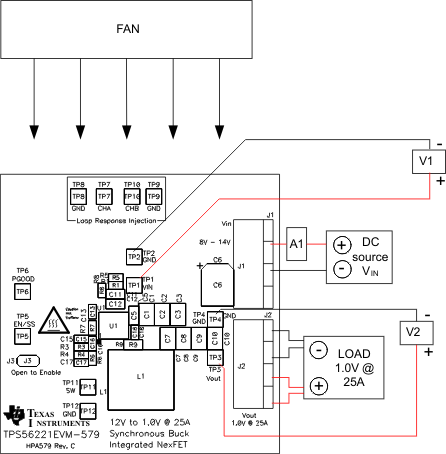SLVU446B March 2011 – July 2021 TPS56221
5.3 Equipment Set Up Procedure
Figure 5-1 is the recommended test setup to evaluate the TPS56221EVM-579.
 Figure 5-1 TPS56221EVM-579 Recommended Test Setup
Figure 5-1 TPS56221EVM-579 Recommended Test Setup- Working at an ESD workstation, make sure that any wrist straps, bootstraps and mats are connected referencing the user to earth ground before power is applied to the EVM. Wearing electrostatic smock and safety glasses is also recommended.
- Prior to connecting the DC input source, VIN, it is advisable to limit the source current from VIN to 4.0 A maximum. Make sure VIN is initially set to 0 V and connected as shown in Figure 5-1.
- Connect VIN to J1 as shown in Figure 5-1.
- Connect ammeter A1 between VIN and J1 as shown in Figure 5-1.
- Connect voltmeter V1 to TP1 and TP2 as shown in Figure 5-1.
- Connect voltmeter V2 to TP3 and TP4 as shown in Figure 5-1.
- Place the fan as shown in Figure 5-1 and turn it on, ensuring that the air blows directly across the evaluation module.